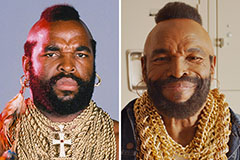Extended Reach, Same High Quality
Celebrated for its devotion to excellence, MyCigarsASAP.com offers a carefully chosen range of premium cigars from the most prominent brands in the industry. By broadening its reach to West Hollywood, the company maintains its provision of direct access to an extensive collection of luxury cigars, maintaining the same high standards of quality control that have made it a trusted name among cigar enthusiasts.
Cigar Delivery West Hollywood
CALL (800) 654-7959
Cigar aficionados in West Hollywood may choose from renowned brands like: • Arturo Fuente – Presenting a diverse collection of meticulously created cigars. • Montecristo – Renowned for its velvety, balanced fusions that fulfill different preferences. • Cohiba – Recognized globally for delivering a flavorful, strong smoking experience. • Davidoff – A standard of refinement, featuring cigars of unsurpassed stability and superiority. • My Father's Cigars – Offering bold, hearty flavors that are influenced by Cuban cigar-making traditions. • Ashton – Noted for its mellow, graceful flavor, produced from the superior tobaccos from the Dominican Republic. • Padron – Famous for its intense tastes and expert craftsmanship, including the highly prized 1964 Anniversary Series. • Romeo y Julieta – A timeless option celebrated for its consistent tastes and steady quality.
This comprehensive selection makes certain that MyCigarsASAP.com fulfills a broad spectrum of desires, with cigars sourced from celebrated regions such as Nicaragua, the Dominican Republic, and Honduras.
Commitment to Freshness and Superiority
Caliber is at the basis of MyCigarsASAP.com’s endeavors. To guarantee each cigar reaches perfect condition, the company uses strict quality control procedures, including humidity-controlled storage and meticulously chosen inventory. Every delivery is processed with attention, assuring that the cigars are provided fresh and rich in taste. Furthermore, their team of cigar experts is on standby to deliver individualized recommendations, making each customer’s experience both personalized and informative.
Quick and Easy Delivery to West Hollywood
With this current service enlargement, MyCigarsASAP.com reinforces its standing as one of the speediest premium cigar delivery services locally. Whether for a spontaneous celebration, a prearranged event, or a simple evening of relaxation, locals in West Hollywood can now indulge in efficient cigar deliveries within 30 to 60 minutes of placing an order. This fast service provides a enhanced ease to West Hollywood’s cigar connoisseurs.
Cigar Delivery West Hollywood
CALL (800) 654-7959
About MyCigarsASAP.com
MyCigarsASAP.com is a California-based cigar delivery service determined to offer swift, uninterrupted access to a premium selection of cigars. With a emphasis on quality, freshness, and personalized service, the company has earned a reputation as a trusted source for cigar lovers across the region. Now, with enlarged service to West Hollywood, MyCigarsASAP.com stays ahead in supplying first-class cigars efficiently and accurately.
For more knowledge or to order now for quick delivery, call (800) 654-7959.
Cigar Origins and Background: A Trip Through Periods
Cigars, often linked with affluence, heritage, and workmanship, bear a extensive history reaching centuries. The progression of cigars illustrates the convergence of ethnicities, exploration, and financial dealings. This article examines the compelling origins and past of cigars, charting their odyssey from indigenous practices in the Americas to transforming into a world-spanning symbol of refinement.
The Old Dawn: Cigars in Pre-Columbian Cultures Cigars have their primitive origins in the native civilizations of the Americas. Early peoples, including the Mayans, Aztecs, and Taínos, are believed to have used folded tobacco fronds. Anthropological discoveries present images of Mayans enjoying on pottery vessels belonging to minimum the 10th century. The title “cigar” possibly evolves from the Mayan word “sikar,” which denotes to smoke.
In these primeval societies, tobacco was not only a leisure product but also held mystical significance. Shamans and tribal leaders inhaled tobacco during ritualistic rites, believing it allowed them to interact with the invisible world. Tobacco was also used medicinally, offering comfort for various maladies, such as headaches and gastrointestinal issues.
Tobacco’s Emergence to Europe: Columbus and the New World The European history of cigars started with Christopher Columbus’s advent in the Americas in 1492. His crew came across local people puffing rolls of dried tobacco greens, an new practice that puzzled them. Columbus and his men gathered examples back to Spain, marking the start of Europe’s connection with tobacco.
The practice of using quickly propagated across Europe. Spaniards adopted it first, and by the 16th century, tobacco use developed into popular among European gentry. Early cigars were unsophisticated compared to modern versions, but their appeal spread to Italy, Portugal, and France. Tobacco was also viewed as a medical wonder, believed to fix a host of illnesses from infections to weariness.
Cuban Influence: Birthplace of the Modern Cigar Cuba’s contribution in cigar history is essential, evolving tobacco from a indigenous commodity into a global phenomenon. In the 17th century, Cuba evolved into the epicenter of cigar generation due to its excellent climate and rich soil, particularly in the Vuelta Abajo region. Cuban cigars quickly gained a fame for unsurpassed quality and mastery.
By the 1800s, the Cuban cigar industry was prospering, and the term “Havana cigar” was synonymous with excellence. Experienced artisans, known as torcedores, produced cigars by hand, refining techniques that endure largely unchanged today. Many of the world’s most well-known cigar brands, such as Montecristo, Cohiba, and Romeo y Julieta, connect their beginnings to this era.
The Enlargement to North America and Europe The desire for cigar s expanded beyond Cuba’s borders by the 18th and 19th centuries. Tobacco plantations commenced emerging in other Caribbean islands, such as the Dominican Republic and Jamaica, as well as parts of Central America, including Honduras and Nicaragua. These regions endure as cigar strongholds today, each imparting unique characteristics to their products.
In Europe, Spain and the Netherlands evolved into prominent consumers and producers of cigars. The Dutch founded a healthy cigar industry, importing Cuban tobacco and melding it with indigenous leaves to produce particular styles. Meanwhile, cigar smoking in the United States turned into aligned with status and masculinity. The rise of industrialization saw cigar factories increase across the U.S., particularly in Florida, where Cuban immigrants introduced their workmanship and traditions.
Cigars and Social Status: From Aristocracy to the Everyday Man Throughout background, cigars have been closely affiliated to status, wealth, and celebration. By the 19th century, cigars were a mainstay among European and American aristocrats. Monarchs such as King Edward VII of England were well-known cigar connoisseurs, further elevating their popularity among the elite.
In the United States, cigars became related to political power and business success. Industrial magnates like Andrew Carnegie and John D. Rockefeller were often photographed smoking cigars, strengthening their image as representations of wealth. Prominent figures such as Winston Churchill famously endorsed cigars, supplementing to their prestige.
However, cigars were not limited to the upper class. The growth of the cigar industry led to the manufacture of accessible options, making cigars available to the working class. Cigar clubs and lounges arose, offering venues where people from all walks of life could indulge in a smoke.
The Cuban Embargo and the Rise of New Markets The Cuban cigar industry confronted a major turn in 1962 when the U.S. government, under President John F. Kennedy, implemented a trade embargo on Cuba. Cuban cigars, previously a fixture among American cigar enthusiasts, became illegal in the U.S., creating both paucity and intrigue around them. As a result, many Cuban cigar makers relocated to neighboring countries like the Dominican Republic, Nicaragua, and Honduras, where they continued their profession using Cuban-seed tobacco.
This geopolitical upheaval initiated new markets and helped to the rise of premium cigars outside Cuba. Today, cigars from these regions are renowned for their quality, equaling Cuban cigars in flavor, construction, and diversity.
Cigars in Popular Culture and Cinema Cigars have secured their place in popular culture, often denoting power, victory, and sophistication. Hollywood adopted the cigar as an icon, featuring it prominently in films. Characters like Tony Montana in Scarface and Winston Churchill in The Darkest Hour perpetuate the affiliation between cigars and authority.
Moreover, cigars are a mainstay at celebrations, marking occasions such as weddings, business deals, and the birth of children. Cigar lounges and clubs browse this site continue to serve as hangouts for socializing and networking, bolstering their cultural relevance.
The Modern Cigar Renaissance The late 20th and early 21st centuries have seen a reawakening of cigar culture. The 1990s “Cigar Boom” in the U.S. saw a reawakened interest in premium cigars, with new enthusiasts joining the scene. Artisanry, diversity in blends, and boutique techniques have driven the modern cigar renaissance.
Craft cigar brands have secured popularity, offering particular blends that engage to a increasing demographic of younger smokers. Additionally, the rise of cigar lounges and online cigar shops has made it easier for consumers to experience different varieties from around the world. Events like Cigar Aficionado’s Big Smoke further demonstrate the continuing appeal of cigars in contemporary culture.
Cigars and Sustainability: The Future of the Industry As the cigar industry progresses, sustainability has become a main point. Environmental factors, including climate change and deforestation, influence tobacco cultivation. Many cigar manufacturers are initiating eco-friendly practices by using sustainable farming methods and encouraging reforestation efforts.
Fair labor practices are also spreading, with companies confirming fair wages and safe working conditions for the farmers and artisans involved in cigar production. The focus on sustainability seeks to protect the industry’s legacy while accommodating the expectations of socially conscious consumers.
Conclusion: A Legacy of Tradition and Craftsmanship From the venerated rites of indigenous tribes to the opulent lounges of today, cigars have come a long and legendary path. Each drag of a premium cigar embodies with it the legacy of generations of mastery, tradition, and cultural significance. Whether indulged in by royalty, industrial tycoons, or modern-day devotees, cigars continue to stand for more than just tobacco—they comprise a lifestyle, a celebration, and a relation to history.
As the world of cigars progresses, one thing continues constant: the charm of unwinding, lighting up, and relishing the masterful combination of tradition and innovation enveloped in each leaf.
The Cigar Creation Method: A Journey from Former Days to Present
One Cigar Manufacturing Process: An Journey from Past to Present
Introduction
A cigar, a timeless symbol of extravagance and grace, has its own rich history that extends over centuries and continents. From its early origins among indigenous peoples to its modern incarnation as its own global industry, the process of crafting a cigar is an blend of art, inquiry, and tradition. This article investigates the intricate journey of cigar manufacturing, contrasting the methods of the past with those of today, and highlighting how innovation and heritage blend in this intriguing craft.
I. Historical Overview of Cigar Manufacturing
A. Early Origins of Cigars
The history of cigars traces back to the indigenous peoples of the Caribbean and Mesoamerica, who raised tobacco and used it in religious and medicinal practices. When Christopher Columbus arrived in the New World in 1492, he and his crew saw the native Taíno people of Cuba and Hispaniola making and smoking dried tobacco leaves. This practice fascinated the Europeans, who brought tobacco back to the Old World, where it quickly acquired popularity.
B. Traditional Cigar-Making Techniques
1. Tobacco Cultivation
In the early days, tobacco cultivation was the manual and labor-intensive process. Farmers counted on natural cycles and traditional knowledge to grow tobacco plants. The seeds were introduced by hand, and the plants demanded meticulous care to thrive.
2. Leaf Selection and Fermentation
After harvesting, the tobacco leaves underwent a natural air-curing process. They were draped in curing barns to dry slowly, giving the chlorophyll to break down and the leaves to acquire their characteristic brown color. Fermentation proceeded, where the leaves were arranged in piles called pilones. The natural heat generated by microbial activity lowered harshness and brought out the rich flavors.
3. Rolling Methods
Cigar rolling was an craft conveyed through generations. Skilled artisans, known as torcedores, rolled cigars entirely by hand. They picked filler leaves, attached them with a binder leaf, and wrapped the bunch with a high-quality wrapper leaf. This meticulous process necessitated precision and an eye for quality.
C. The Role of Cuban Cigar Tradition
Cuba became interchangeable with premium cigars due to its ideal climate and soil conditions, particularly in the Vuelta Abajo region. The country's cigar-making techniques set the standard for quality and craftsmanship. Cuban cigars were greatly valued, and the methods developed there guided cigar production worldwide.
II. Modern Cigar Manufacturing Process
A. Advances in Tobacco Cultivation
1. Genetic Selection
Modern agriculture has introduced genetic selection to improve tobacco plant qualities. Scientists and farmers cooperate to develop tobacco strains resistant to diseases and pests, and with desired flavor profiles. This generates more consistent and high-quality crops.
2. Modern Farming Techniques
Today, tobacco farming uses advanced irrigation systems, soil management, and crop rotation to maximize yield and quality. Precision agriculture technologies, such as GPS mapping and drones, help monitor plant health and optimize resource use.
B. Leaf Processing Today
1. Fermentation Methods
While the fundamental principles of fermentation stay, modern facilities manage temperature and humidity with greater precision. This control secures uniformity and augments flavor development. Some producers apply multiple fermentation cycles to refine the tobacco further.
2. Aging and Storage
Post-fermentation aging has transformed into a critical step. Tobacco leaves are aged in controlled environments, sometimes for several years, to mellow the tobacco and augment complexity. Aging rooms are equipped with technology to copyright ideal conditions.
C. Contemporary Cigar Rolling
1. Machine-Made vs. Hand-Rolled Cigars
The 20th century experienced mechanization to cigar production. Machine-made cigars implement homogenized tobacco leaf (HTL) binders and wrappers, providing for mass production at lower costs. However, premium cigars continue to be hand-rolled, protecting the artisanal tradition.
2. Quality Control
Modern factories carry out strict quality control measures. This includes regular inspections, draw testing to validate proper airflow, and sensory evaluations. Technology enhances but does not supersede the expertise of seasoned inspectors.
D. Innovations in Packaging and Distribution
Advancements in packaging materials safeguard cigars from environmental factors during shipping. Vacuum-sealed packaging, humidification devices, and sophisticated distribution logistics maintain cigars reach consumers in optimal condition.
III. Comparing Past and Present Methods
A. Technological Advances
Technology has optimized many aspects of cigar manufacturing without lessening the importance of skilled labor. Mechanization manages repetitive tasks, while artisans focus on quality and craftsmanship.
B. Maintaining Tradition in a Modern Industry
Despite technological progress, the essence of cigar-making lasts rooted in tradition. Many producers focus on hand-rolled methods and traditional fermentation to sustain authenticity and meet the needs of aficionados who value heritage.
C. Challenges and Opportunities
The industry confronts challenges like regulatory changes, health concerns, and market fluctuations. However, opportunities develop from expanding global markets, premiumization trends, and consumer interest in artisanal products.
IV. The Art of Cigar Making: Preserving Craftsmanship
A. The Role of the Torcedor (Cigar Roller)
Torcedores are revered figures in cigar factories. Their expertise defines the cigar's construction and performance. Training to become a master roller can take years, demonstrating the complexity of the craft.
B. Apprenticeship and Skills Transfer
Many factories administer apprenticeship programs to hand down skills to new generations. This guarantees the survival of traditional techniques and protects high standards in production.
C. Cultural Significance
Cigar-making is more than an business; it's the cultural heritage in regions like Cuba, the Dominican Republic, and Nicaragua. Festivals, museums, and tours commemorate this legacy, attracting enthusiasts worldwide.
The cigar manufacturing process is an captivating blend of time-honored traditions and modern innovations. While technology has introduced efficiencies and consistency, the heart of cigar-making exists in the hands of skilled artisans who continue a legacy that encompasses centuries. Grasping this journey enriches the appreciation of cigars, not just as products but as symbols of cultural heritage and craftsmanship.
 Danny Tamberelli Then & Now!
Danny Tamberelli Then & Now! Mr. T Then & Now!
Mr. T Then & Now! Angus T. Jones Then & Now!
Angus T. Jones Then & Now! Jason J. Richter Then & Now!
Jason J. Richter Then & Now! Bernadette Peters Then & Now!
Bernadette Peters Then & Now!